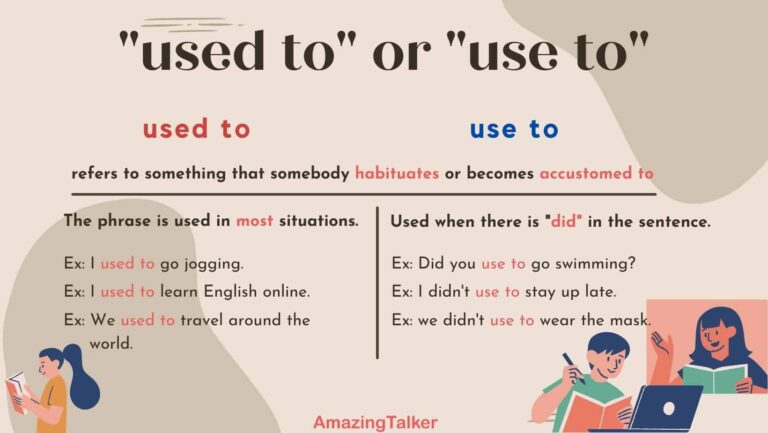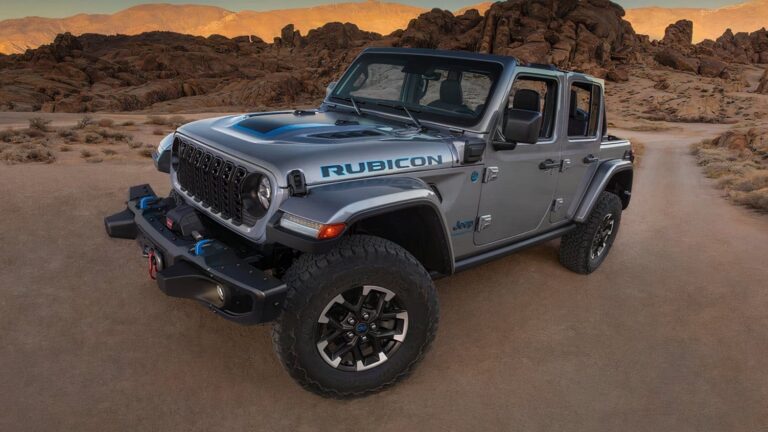2004 Jeep Grand Cherokee Fender Flares: Enhancing Form, Function, and Off-Road Readiness
2004 Jeep Grand Cherokee Fender Flares: Enhancing Form, Function, and Off-Road Readiness jeeps.truckstrend.com
The 2004 Jeep Grand Cherokee, part of the beloved WJ generation (1999-2004), remains a popular choice for enthusiasts and daily drivers alike, celebrated for its rugged capability and comfortable ride. While a testament to enduring design, many WJ owners seek to further enhance their vehicle’s aesthetics, protection, and compliance, especially when venturing into the world of larger tires and off-road adventures. This is where 2004 Jeep Grand Cherokee fender flares come into play.
Fender flares are exterior automotive accessories that extend the width of a vehicle’s wheel wells, providing additional coverage for tires that protrude beyond the factory bodywork. For the 2004 Grand Cherokee, they are not merely cosmetic additions; they serve crucial functional roles, protecting the vehicle’s paint from debris, preventing compliance issues with local laws regarding tire coverage, and significantly transforming the vehicle’s stance and appearance. Whether you’re aiming for a more aggressive off-road look, need to accommodate wider aftermarket wheels, or simply want to safeguard your paint, investing in the right fender flares can be a game-changer for your WJ.
2004 Jeep Grand Cherokee Fender Flares: Enhancing Form, Function, and Off-Road Readiness
Why Consider Fender Flares for Your 2004 Jeep Grand Cherokee?
The decision to add fender flares to your 2004 Grand Cherokee is often driven by a combination of practical and aesthetic considerations.
- Enhanced Aesthetics and Aggressive Styling: Factory WJ Grand Cherokees have relatively subtle fender lines. Aftermarket flares, particularly "pocket" or "rivet" styles, can drastically change the vehicle’s profile, giving it a wider, more muscular, and undeniably aggressive off-road presence. They can complement lift kits and larger tires, completing the rugged transformation.
- Superior Paint Protection: One of the primary functional benefits of fender flares is their ability to shield your Jeep’s body from road debris. As tires spin, they kick up rocks, mud, sand, and other detritus. Without adequate coverage, this material can chip, scratch, and even dent your vehicle’s paintwork, leading to rust and costly repairs. Flares act as a barrier, deflecting these projectiles away from your precious finish.
- Legal Compliance for Larger Tires: Many regions have laws requiring that a vehicle’s tires be fully covered by the fender or fender flare. When you install wider tires or wheels with a more aggressive offset on your 2004 Grand Cherokee, the tires often extend beyond the factory bodywork. Fender flares become a necessity to ensure your vehicle remains street-legal, helping you avoid potential fines and inspection issues.
- Accommodating Wider Wheels and Tires: For serious off-road enthusiasts, larger tires are essential for improved traction and ground clearance. Fender flares provide the necessary clearance and coverage for these wider setups, preventing rubbing issues during suspension articulation and ensuring the tires are adequately housed within the wheel wells.
- Preserving Resale Value: While often overlooked, protecting your vehicle’s paint from damage can contribute to a higher resale value down the line. A well-maintained exterior, free from chips and scratches caused by road debris, is always more appealing to potential buyers.

Types of Fender Flares for the WJ Grand Cherokee
The market offers a variety of fender flare styles and materials, each catering to different needs and aesthetic preferences for your 2004 Grand Cherokee.
- OEM Style/Replacement Flares: These are designed to mimic the original factory flares, often used to replace damaged stock units or to add flares to models that didn’t originally come with them. They maintain a subtle, integrated look.
- Pocket Style/Rivet Style Flares: Arguably the most popular choice for the WJ, these flares feature exposed "pockets" or "rivets" around the outer edge, giving them a bold, industrial, and highly aggressive appearance. They typically provide significant tire coverage and are a favorite among off-roaders. Brands like Bushwacker are renowned for this style.
- Smooth/Street Style Flares: For those who prefer a cleaner, more integrated look without the visible hardware of pocket flares, smooth flares offer extended coverage with a sleek finish. They blend more seamlessly with the vehicle’s lines, often chosen for a customized, painted-to-match aesthetic.
- Extended/Extra Wide Flares: Designed for Grand Cherokees running exceptionally wide tires or wheels with extreme negative offset, these flares offer maximum tire coverage. They are typically found in both pocket and smooth styles, providing the most robust protection and compliance for highly modified setups.
Materials: Most 2004 Grand Cherokee fender flares are constructed from durable, UV-resistant materials such as:
- ABS Plastic: Lightweight, flexible, and highly resistant to impacts and scratches. It’s the most common material due to its balance of durability and cost-effectiveness.
- DuraFlex (Proprietary Blends): Some manufacturers use proprietary blends of plastic and composites for enhanced flexibility and impact resistance.
- Fiberglass: Less common for flares due to its rigidity and susceptibility to cracking upon impact, but offers a very smooth, paintable surface.
Key Considerations Before Purchasing
Choosing the right fender flares for your 2004 Jeep Grand Cherokee requires careful thought to ensure perfect fitment, desired aesthetics, and functional benefits.
- Tire Size and Wheel Offset: This is paramount. Measure how far your tires currently protrude (or how far you intend them to protrude with future upgrades). Flares are typically advertised with an "additional coverage" measurement (e.g., 2 inches, 3 inches). Ensure this measurement is sufficient for your setup.
- Intended Use: Will your Jeep be primarily a street vehicle, or will it see regular off-road action? Aggressive, durable flares are better for off-roading, while smoother styles might be preferred for street-only Jeeps.
- Installation Method: Most flares for the WJ require some drilling into the fender or inner fender liner for secure attachment. "No-drill" options are rare for full fender flares on this generation. Be prepared for potential body modification or consider professional installation if uncomfortable.
- Material Durability and UV Resistance: Ensure the material can withstand harsh weather conditions, road debris, and prolonged sun exposure without fading, cracking, or warping. UV protection is crucial, especially for black flares.
- Paintability: Do you want your flares to remain matte black (a popular choice for contrast) or do you intend to paint them to match your Jeep’s body color? Check if the flares are paintable and if any special preparation (e.g., priming) is required.
- Brand Reputation and Reviews: Stick to reputable brands known for quality fitment and durable products. Bushwacker, Rugged Ridge, and Lund are some well-regarded names in the fender flare market. Read reviews specific to the 2004 Grand Cherokee (WJ) to gauge real-world experiences.
- Budget: Fender flares vary widely in price based on brand, style, material, and coverage. Set a realistic budget before you start shopping.
Installation Guide: A Step-by-Step Overview
Installing fender flares on your 2004 Jeep Grand Cherokee is a manageable DIY project for those with basic mechanical skills, but it requires patience and precision. Always refer to the manufacturer’s specific instructions, as procedures can vary.
-
Preparation:
- Gather Tools: You’ll likely need a drill, drill bits (specific sizes), socket wrench set, screwdrivers, masking tape, a marker, a measuring tape, and a clean cloth.
- Clean the Area: Thoroughly clean the fender wells and the surrounding body panels where the flares will attach. Remove any dirt, mud, or wax.
- Read Instructions: Before touching any tools, read the entire instruction manual provided with your flares. Understand each step and identify all hardware.
-
Removal of Old Flares (if applicable):
- If your WJ has existing flares, carefully remove them. This usually involves unscrewing fasteners from the underside of the fender liner and along the fender lip. Be gentle to avoid damaging the paint or body.
-
Test Fit and Mark:
- This is a critical step. Carefully position each new fender flare onto the corresponding wheel well.
- Use masking tape to temporarily hold it in place.
- Align it precisely with the contours of the fender.
- Using a marker, carefully mark the locations for drilling, typically through pre-drilled holes on the flare itself. Double-check all measurements and alignments before proceeding.
-
Drilling (if required):
- Most aftermarket flares for the WJ will require drilling new holes into the fender lip or inner fender well.
- Use the recommended drill bit size from the instructions.
- Start with a smaller pilot hole, then enlarge to the final size.
- Crucial Tip: Apply touch-up paint or a rust preventative primer to any freshly drilled holes to prevent rust formation. This step is often overlooked but vital for long-term body integrity.
-
Attachment:
- With the holes drilled and prepped, begin attaching the flares.
- Install any included rubber trim or edge molding onto the flare before mounting. This trim helps protect the paint and provides a clean seal.
- Secure the flares using the provided hardware (screws, clips, bolts). Start all fasteners loosely, then tighten them gradually and evenly to ensure proper seating and avoid warping the flare.
- Some flares may also use double-sided adhesive tape for added security along the top edge.
-
Finishing Touches:
- Once all flares are securely mounted, remove any masking tape.
- Wipe down the flares and surrounding area to remove any marks or debris.
- Step back and admire your transformed 2004 Grand Cherokee!
Maintenance and Care for Your Fender Flares
Proper care will extend the life and maintain the appearance of your 2004 Grand Cherokee fender flares.
- Regular Cleaning: Wash your flares regularly, especially after off-roading, to remove dirt, mud, and road grime. Use a mild automotive soap and a soft brush or sponge. Pay attention to the areas where the flares meet the body.
- UV Protection: For black, unpainted flares, regular application of a UV protectant (like those used for plastic trim or tires) is crucial to prevent fading, chalking, and discoloration from sun exposure.
- Inspect Fasteners: Periodically check all screws and fasteners to ensure they remain tight. Vibrations from driving and off-roading can sometimes loosen them.
- Address Damage Promptly: If a flare gets scratched or damaged, assess the extent. Minor scratches can sometimes be buffed out, while deeper damage might require repair or replacement of the individual flare.
Potential Challenges and Solutions
While generally straightforward, installing fender flares can present a few challenges:
- Fitment Issues: Occasionally, flares may not perfectly align. This could be due to manufacturing tolerances or minor body damage on your Jeep.
- Solution: Double-check the product’s compatibility before purchase. If issues arise during installation, try slightly adjusting the flare’s position or the mounting points. Contact the manufacturer’s support if fitment is severely off.
- Hesitation to Drill: Drilling into your vehicle’s body can be daunting.
- Solution: Use the provided templates carefully. Start with small pilot holes. Apply rust-preventative primer or paint to all drilled holes immediately. If you’re truly uncomfortable, consider professional installation.
- Color Fading (for black flares): Over time, black plastic flares can dull or fade from UV exposure.
- Solution: Consistent application of UV protectant dressings will help. If heavily faded, dedicated plastic restoration products can revive the color, or you can paint the flares (requires proper prep and a flexible paint designed for plastics).
- Damage from Off-roading: Flares are designed to take hits, but extreme impacts can crack or break them.
- Solution: Choose durable materials like ABS plastic. Remember that flares are somewhat sacrificial in heavy off-roading; they protect the body. Individual flares are often replaceable.
Pricing Table for 2004 Jeep Grand Cherokee Fender Flares
Please note that prices are approximate and can vary significantly based on the brand, material, style, retailer, and current market conditions. This table is intended as a general guide.
| Type of Flare | Brand Examples | Material (Common) | Key Features | Approximate Price Range (Set of 4) |
|---|---|---|---|---|
| OEM Style / Stock Replacement | Crown Automotive, Omix-ADA | ABS Plastic | Direct factory replacement, subtle look, maintains original appearance. | $150 – $300 |
| Pocket Style / Rivet Style | Bushwacker, Rugged Ridge, RedRock | DuraFlex, ABS Plastic | Aggressive, bolt-on look, significant tire coverage, often matte black finish. | $350 – $700+ |
| Smooth / Street Style | EGR, Lund | ABS Plastic | Sleek, integrated look, paintable, moderate tire coverage. | $300 – $550 |
| Extended / Extra Wide | Bushwacker (e.g., Cut-Outs) | DuraFlex, ABS Plastic | Maximum tire coverage, often requires body cutting, for extreme setups. | $600 – $1000+ |
Note: Prices typically include all necessary mounting hardware and instructions. Professional installation, if desired, will be an additional cost.
Frequently Asked Questions (FAQ)
Q1: Do I really need fender flares for my 2004 Jeep Grand Cherokee?
A1: It depends on your setup and local laws. If you’re running larger, wider tires or wheels with an aggressive offset that causes the tire tread to extend beyond the fender, flares are highly recommended for legal compliance and paint protection. They also offer a significant aesthetic upgrade.
Q2: Are fender flares difficult to install on a 2004 WJ Grand Cherokee?
A2: For someone with basic mechanical skills, it’s a manageable DIY project. It typically involves drilling into the fender lip or inner fender well. The most crucial steps are careful measurement, test-fitting, and proper rust prevention for drilled holes. If uncomfortable, professional installation is always an option.
Q3: Can I paint my fender flares to match my Jeep’s body color?
A3: Yes, most ABS plastic fender flares are paintable. However, proper preparation is key. This usually involves scuffing the surface, cleaning thoroughly, applying an adhesion promoter, and then priming before applying automotive paint and clear coat. Always check the manufacturer’s recommendations.
Q4: What’s the best material for 2004 Grand Cherokee fender flares?
A4: ABS plastic or proprietary DuraFlex blends are generally considered the best. They offer an excellent balance of durability, flexibility (to resist cracking from impacts), UV resistance, and cost-effectiveness.
Q5: Do fender flares come with all the necessary hardware?
A5: Reputable brands typically include all the necessary mounting hardware (screws, bolts, clips, rubber seals, and sometimes edge trim) and detailed installation instructions with the fender flare kit. Always verify the contents upon arrival.
Q6: Will these flares fit all 2004 Jeep Grand Cherokee trims (Laredo, Limited, Overland)?
A6: Yes, fender flares designed for the 2004 Jeep Grand Cherokee (WJ generation, 1999-2004) are generally universal across all trim levels within that generation, as the body dimensions and fender well shapes are consistent. Always double-check product descriptions for specific year and model compatibility.
Conclusion
Fender flares for the 2004 Jeep Grand Cherokee are much more than simple accessories; they are a vital upgrade that enhances both the form and function of this iconic SUV. From providing essential protection against road debris and ensuring legal compliance with larger tires to dramatically transforming the vehicle’s aesthetic into a more aggressive, off-road-ready machine, the benefits are clear.
By carefully considering the various types, materials, and installation requirements, and by following best practices for maintenance, you can select and integrate the perfect set of flares to complement your WJ. This investment not only safeguards your vehicle’s paintwork but also solidifies its commanding presence on the road and trail, ensuring your 2004 Grand Cherokee continues to turn heads for years to come.



